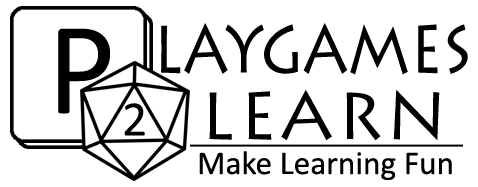
As often as not, when we play a game, we aren’t taking a box from off our shelf – we’re playing games from our brains.
“Extinction Event” always comes to my mind when thinking of an example of a non-traditional game that just popped into being. It spontaneously spawned from equal-part desires to teach a young child the what/where/when/why/how of throwing things indoors safely, and to also impart some knowledge/learning through a fun, experiment-like game.
This past holiday season produced a few more examples. We had the intention to rattle through our traditionally boxed card and board games. In addition to the fun of playing the games, there was also the parental goal to identify those games we still like to play and those that are now a bit too young, or have lost their appeal in other ways – and to put them away. For some reason that goal suddenly made the idea of playing those games not nearly as appealing to the youngest family member! 😉 So, what ended up happening is we spent a lot of time inventing, playing, refining, and then re-playing games that came out the blue – games from our brains. Ad-hoc, random, imaginative, and inspired games.
Perhaps inspired by another game we were just playing, these ideas often start with: “Hey! What about a game that…?” An example from this holiday is a game our daughter put together in a just few minutes using the same connecting blocks we use with “Cube-Or-ACK!” She called it “Stick-Stacks”.
How to play “Stick-Stacks”
- Randomly choose three of the five coloured blocks without any player seeing. These are kept hidden until scoring.
- Each player writes down a “target number” that is within the range of the total blocks for each colour (eg: from 1-30). This paper is folded to hide the number, and then it is given to the next player on the left. The paper is not opened until scoring.
- As fast as they can, players begin simultaneously drawing blocks from the pile of all five colours, sticking them together into one long stack.
- Once all the blocks have been drawn, it’s time for scoring. Only blocks of the three chosen colours are counted. Whichever player comes closest to their “target number”, with one of the valid colours, wins.
Add a couple other minor scoring rules and there you go – instant game! And one we played repeatedly over the next few days, testing out new strategies to try to improve our own chances of winning while confounding the others.
Other times, we might create a variant of one of our existing games by asking: “How about this time we…?” An example of this type of thinking during the holidays produced “The Car Game”, which was inspired by our outdoor javelin-tossing game, “Throw and Write”.
How to play “The Car Game”
- Place an 8’ long 4”x4” wooden beam crosswise on a futon mattress that’s lying on a carpeted floor. The futon is there to keep the beam a few inches off the ground, with each end sticking out, unsupported. In the carpet, at one end of the beam, draw a number of concentric circles to be the target area, with points assigned to each ring.
- Collect all your diecast model cars into a container, and have the players take turns drawing cars to build their teams.
- Players then take turns attempting to roll their cars down the length of the beam and into the target area by lifting the beam at the opposite end. Players may raise, lower, and twist the beam as desired, but they may not touch their cars.
- Cars that do not make it to the far side of the futon are removed from the player’s team (some cars quickly gained a bad reputation!). Cars that manage to land within the rings earn the player the corresponding points; half points from each ring if on the line.
The game continues until only one player has any cars left on their team or until an agreed number of rounds have been completed (eg: 10 runs for each player). The player with the most points wins.
Our multi-sided game dice also continued to be a source of frequent inspiration for new game ideas during the holidays: dice rolling competitions, calculation-based choose-a-path games, etc.
We are PlayGames2Learn.com and we play games to help #MakeLearningFun. It can be challenging to keep finding the right commercial games to impart the educational nuggets our children need as they continue to grow and mature. But games from our brains? There is always something new to try, to test, to improve, to incorporate…to learn. 🙂
Join our Community of Parents and Educators!
At Silverpath Publishing / PlayGames2Learn.com, we believe in #LearningThroughPlay to help #MakeLearningFun. We publish fiction and educational tabletop games for children and young adults.
To receive announcements about new releases and promotional discounts as well as invitations to participate as beta-readers or play-testers, subscribe to our mailing list.
